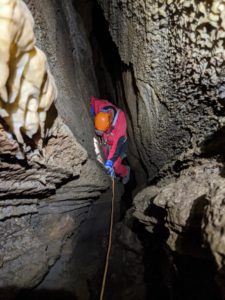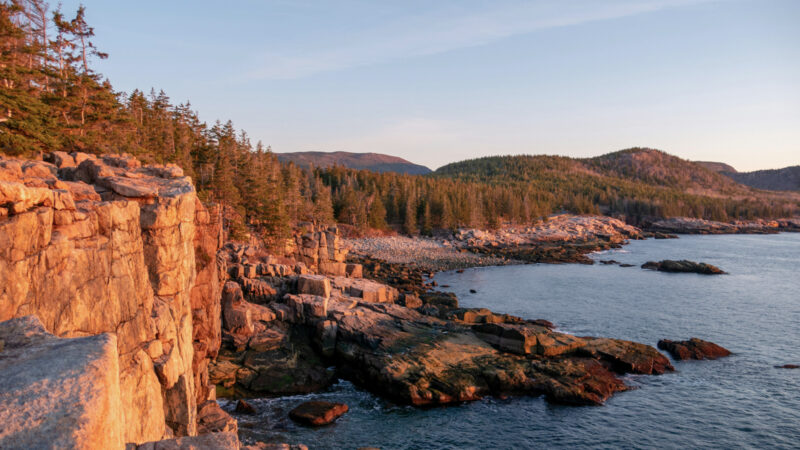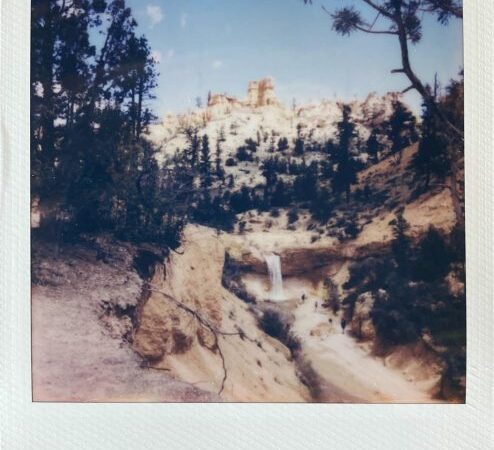Deeper and Darker
With satellite imagery of most of the Earth’s surface and some mapping of the ocean floor, very few places on this planet are truly unknown. Now, with the James Webb telescope showing us distant clusters and megaclusters of galaxies, we’re learning about places literally lightyears away. Satellites and other forms of radio connect some of the most remote parts of the world with the rest of it. In most places, if it’s dark, in less than 24 hours it will be light again.
Fortunately, for those who want it, there are deeper and darker depths to be explored, sometimes quite literally under our feet. Many caves end in passages too tight, too wet, or too full of soil and rock to allow human travel. Just because water can travel through doesn’t mean humans can. Many, many hours have been spent underground, trying to connect cave systems. If, somehow, you were able to break through, it might be the first time any living organism sees that particular place.
Caving attracts an unusual crowd. Most of us seem to be neurodivergent and don’t seamlessly fit into mainstream society. The community culture is incredibly regional and generational. The older generation tends to be less interested in sharing cave locations or knowledge with anyone, especially new cavers. Younger generations are doing much better at being more diverse and inclusive, however, we still have a ways to go.
Gatekeeping in caving is sometimes quite literal. Some caves are gated, and access is carefully controlled. Literally or otherwise, cavers gatekeep like no other. Sometimes, it’s legitimate concerns over protecting natural resources or safety concerns. Other times, it’s because some cavers are elitist. While in some ways caving is very exclusive, in others it’s very accessible. I’ve caved with small fit people, and large framed less fit people, experienced and inexperienced. With so much variety in the underground world, there’s something for pretty much anyone.
A huge part of gatekeeping is due to equipment restraints. To be an efficient and safe vertical caver, specialized caving equipment is essential. I thought I had a good ascending system as a canyoneer but, while I would have been capable of ascending in an emergency, my equipment and technique is much better now. Our rappel devices, ascending devices, harnesses, and headlamps are rarely seen in other sports. My primary headlamp and several of my cave packs were made by cavers, who were dissatisfied with the available offerings and responded by designing their own. A commonly used rope, the PMI Pit Rope Max Wear 11 mm, is incredibly resilient, with all the flexibility of a steel cable. When you coil it in a circle, no matter where you hold it, it keeps its shape.

Another important gear item that all cavers need is light. There’s a joke, every time someone says “I wonder what this looks like in natural light,” someone will reply “turn off your headlamp and that’s what it looks like.” Natural light is no light when you’re underground. Responsible cavers carry at least three light sources, at least one not attached to the helmet, and each capable of taking you out of the cave at any point. Depending on where you cave, this could be a flashlight powered by a single AAA, or it could be something powered by a pile of 18650s. The brightness, spread, and color temperature are all things I’d never considered before. White LEDs tend to be brighter but give things kind of a sterile look. Warmer colors feel more natural. During underground battery swaps, helmets have been dropped, lost, or destroyed. This is why having a backup not attached to the helmet is good.
Other equipment needs also vary depending on the type of cave you’re exploring. Some caves are straightforward, with large “borehole” passages, and little to no technical ropework. Others are tight, cold, and technically demanding. In some caves, masks and goggles may be necessary to protect against dust, pathogens, and ammonia. Though expensive, gas meters are also a worthwhile investment in some areas.
Some cavers end up surveying caves and creating maps, which also requires special equipment. The process of using a compass, clinometer, protractor, and tape measure or rangefinder, then sketching the measurements and the cave, is difficult by itself. Turning this information into a useful map is an even greater challenge. If it’s visually pleasing, you’ve been very successful. Surveying tends to be cold, cramped, and awkward, but charting the uncharted is a very rare opportunity in this modern age.
The specialized equipment is fairly expensive, but finding someone who will lend you a set usually isn’t too difficult. Learning how to use it can be a challenge, and eventually, you’ll want a fine-tuned system of your own.
Many prospective cavers decide the amount of training and equipment required to visit more exciting caves isn’t worth it. But my experience has taught me otherwise.
Everything seems more interesting underground. A rock that might be unremarkable on the surface is so much better in a cave. Bugs are really cool, and some are often a species or subspecies unique to a specific cave. Spiders and snakes are less fun, but I have to remember, I’m the invader in this case. Remembering this doesn’t stop me from shrieking when I notice two snakes two feet from my ear.
Sometimes a caving trip or rescue training is more about hanging out with my caving friends. The activity has a way of being very intimate, and outings often turn into ad hoc group therapy sessions. Personal space doesn’t always exist, and sometimes the only way to get around someone involves maneuvers that, in any other context, would be considered obscene. Bathroom breaks are rarely private. After sharing those experiences, stripping down and changing clothes at the cave entrance isn’t a big deal. We even get together sometimes outside of caving. It can feel strange to plan non-adventure stuff with your adventure friends, but thanks mainly to one of our locals, my caving group has been doing more dinners and bonfires.
The best way to start caving is to join a literal underground society. The National Speleological Society (or NSS for short–no one can pronounce “speleological”) is an organization with many goals, including helping people learn to cave and connect with local caving groups, called “grottos.” The NSS website can help someone find a grotto. It might be worth shopping around before you choose a group. Unfortunately, some grottos are hostile to new cavers, and some are inactive. If they have an active Facebook page with events to train new cavers, you’ll likely be in good hands. The Timpanogos Grotto has really taken off lately, with many new members excited to experience the underground world.
The remoteness, the problem solving, the technicality, and of course the equipment really draws me to caving. I told myself I’d never do the tight squeezes, and in my first cave, I did. Now my guideline is if my helmet isn’t getting stuck, I should be fine. Seeing cool stuff underground is fun, and getting to know cool people is even more fun.
The post Deeper and Darker appeared first on Wasatch Magazine.






